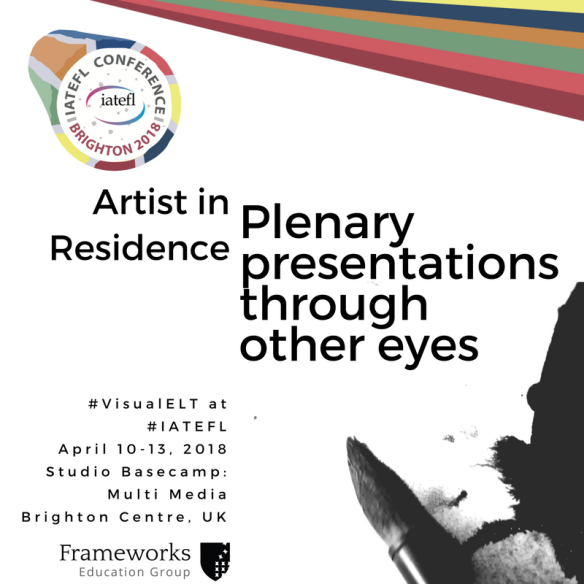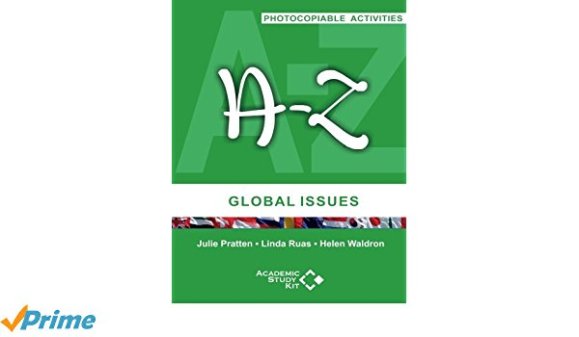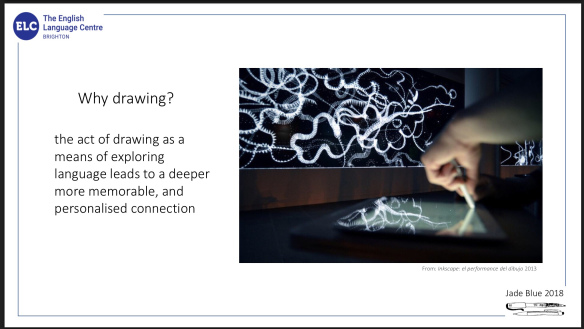
One of our VAC members, Emma L. Pratt, was invited to participate in a innovative way at IATEFL 2018.
Header Image: Detail from “The Ecosytem”, in response to the first plenary about the relationship between research and the classroom.
Being Invited to be the Artist in Residence at IATEFL in Brighton 2018
When I was invited to be the artist in residence at IATEFL in Brighton this year, I jumped at the chance. I had already been talking about artists’ residencies in learning at our Image Conference http://theimageconference.org/emma-louise-pratt-talks-about-her-session-at-the-image-conference/ and especially language learning contexts, and I was keen to develop my own practice and build on my knowledge from having coordinated artists in schools in New Zealand.
The Pre-Conference Day for the GISIG
I had also been invited to participate in the Visual Arts Circle’s facilitation of the Global Issues SIG PCE day. This was an opportunity to explore workshop as performance; an artwork in itself. I had used video and storytelling to lead delegates into a space where they were invited to express their own personal thoughts and stories visually on the theme of social justice.
The Visual Arts in IATEFL 2018
Over the four days of the conference I made work that responded to the guest plenary speakers of IATEFL. I was daunted by the prospect of having to produce “something” under pressure on a topic that was not of my choosing. Added to that, having to do it in public. In short, a difficult brief that is almost counter-creative. Not everyone can do it, but I have a secret weapon. Children and a day job.
My arts practice has long fitted itself around the requirements of co-raising children, co-running a home and co-running a small company. When you are this busy, you become very efficient in the art of filtering noise, stealing moments and giving space to let ideas bubble and process. When I can’t physically make with my hands, I see it in my mind’s eye: images, shapes, colours, all coming and going.
I’ve heard it called “El rio bajo rio” the underground river. All practised creatives know that this river of creativity is flowing even when it’s apparently built over with the day to day needs asked of you. There it flows in the dark velvety deep.
The Teaching Artist
The concept of a teaching artist is perhaps a new idea in language teaching circles. However, in arts circles, it’s a term well used, especially in the United States. You may have heard the concept described sometimes as the participative artist, collaborative artist, the citizen artist and activist artist.
These are all ways to describe artists who move and shapeshift, finding their practice to be something that covers both the making of art works and interaction with a community.
These acts of art making take place away from the sometimes exclusive or problematic world of galleries and museums. They take place in the forms of residencies, performances and workshops in classrooms, public spaces and in my case this April 2018, at the IATEFL conference in Brighton.
Slow Digestion
My temporary art studio, with its work in progress provided chance for reflection. I only had one plenary to digest slowly for the day. Meanwhile, others dashed about in front of me, often asking me hurriedly if room 11 was anywhere near.
Conferences cause a sense of rush. We often need to “doggy bag” our thoughts and reactions, in order to sit down at the next meal. One workshop or presentation after another blurs into a degustation menu that is presented too fast, the plates taken away too suddenly.
I on the other hand, had the space to slow it all down. People could, and did, come and pull up a chair and chat with me as I worked or wandered about the visual work I was creating and peered over my shoulder.
Giving Silence a Place
During the GISIG preconference day, in the first playful stage of our workshop, I noticed that the room had fallen silent. Everyone had been asked to pick up brushes and in and water and simply play with the material on watercolour paper. It was a stage designed to loosen everyone up and introduce them to the materials before we got on to more serious matters.
I had expected chatter, but what I found was silence. A silent room. One delegate described it as if the act of watching the ink absorb in the paper made our bodies and minds slow down too. Perhaps we could consider more space for that.”
Emma would like to thank the GISIG, VAC and IATEFL for the invitation as well as her small team at Frameworks Education Group who walked the dog, fed and entertained the children and held generally held the fort, enabling her to be there. 😉

Emma Louise Pratt IATEFL Artist in Residence Brighton, 2018.

























